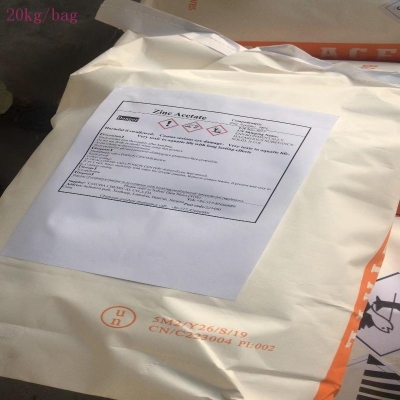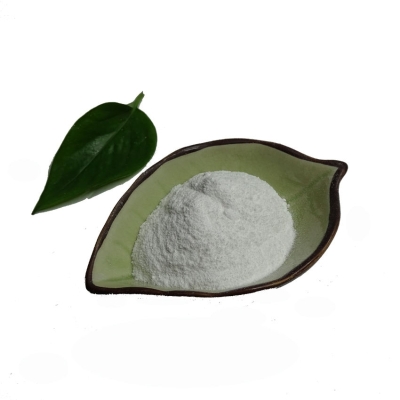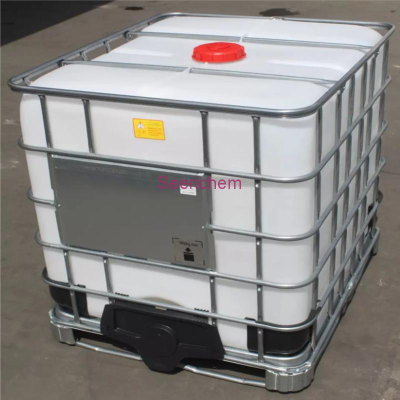-
Categories
-
Pharmaceutical Intermediates
-
Active Pharmaceutical Ingredients
-
Food Additives
- Industrial Coatings
- Agrochemicals
- Dyes and Pigments
- Surfactant
- Flavors and Fragrances
- Chemical Reagents
- Catalyst and Auxiliary
- Natural Products
- Inorganic Chemistry
-
Organic Chemistry
-
Biochemical Engineering
- Analytical Chemistry
-
Cosmetic Ingredient
- Water Treatment Chemical
-
Pharmaceutical Intermediates
Promotion
ECHEMI Mall
Wholesale
Weekly Price
Exhibition
News
-
Trade Service
At present, the stocking of industrial raw material fertilizer in the southern market is relatively active, but the price of raw material fertilizer does not have much room for increase.
With the concentrated production of large domestic fertilizer companies at this stage, there will be a round of small peaks in fertilizer output after the start of winter storage.
Even if the price of raw material fertilizer increases, the increase will be very limited.
Potash fertilizer prices in the later market will also show an upward trend, and urea will also increase at a larger rate.
Phosphate fertilizer prices will stabilize in the later market.
The southern market is relatively warm.
When talking about the overall sales situation of the current fertilizer market, Wu Jingde, deputy general manager of Guangxi Beifeng Agricultural Materials Trading Co.
, Ltd.
, introduced to reporters that from the perspective of seasonal factors, the current crop top-dressing process in northern my country It is basically over.
Only a few areas north of the Yangtze River still have some sales markets for top dressing in autumn.
After the concentrated sales of top-dressing fertilizer in the north in autumn, the next job will be winter storage.
At this time, the analysis of the country's fertilizer market sales should focus on the southern market of my country.
Taking the Guangdong and Guangxi regions as an example, the stocking of industrial raw material fertilizers in the southern market is relatively active, but the price of raw material fertilizers does not have much room for increase.
In the previous period, the bulk market sales price of the three major raw materials of nitrogen, phosphorus and potassium was only slightly higher than the cost line, and some transaction prices were even a few yuan per ton higher than the cost line.
In the recent period, the price of raw material fertilizer represented by potash has a slight upward trend.
The current potash fertilizer has risen by 20-30 yuan per ton compared with a month ago.
The price of urea has also risen slightly compared with the previous due to the key factor of the cost increase, but the increase is less than that of potash, and it has risen by at most 20 yuan per ton.
The hot spot that has received attention recently is phosphate fertilizer.
The recent increase in phosphate fertilizer has been relatively large, reaching 30-50 yuan.
However, from the perspective of the overall market of industrial raw material fertilizers, the price of NPK raw material fertilizers is still not at a high level, and there is still room for price increase of the three element fertilizers.
With the concentrated production of large domestic fertilizer companies at this stage, there will be a round of small peaks in fertilizer output after the start of winter storage.
Even if the price of raw material fertilizer increases, the increase will be very limited.
Currently in the southern market, the stocking time of various distribution companies is correspondingly advanced, but the stocking volume of each company is not very large.
At this stage, the mentality of various distribution companies not dare to actively stock up is understandable.
Just take urea as an example.
Many companies purchased a large amount of urea last winter, but they lost tens of yuan per ton during the spring sales period this year.
With more than one hundred yuan, it's normal to have a lingering heart palpitations.
Looking at the overall situation, except for a slight increase in prices, no more changes have been seen in the industrial raw material fertilizer market.
Wu Jingde also said, In the recent period, the agricultural fertilizer market in the south has many favorable factors.
With the sharp rise in sugar prices, when sugarcane is harvested from November this year to January next year, the average purchase price of sugar mills per ton of sugarcane will be nearly 100-150 yuan.
/Ton, the purchase price of sugarcane is expected to reach 550-600/ton by then.
The favorable price of sugarcane directly stimulates the input of fertilizer by growers, and the price of agricultural fertilizer will rise accordingly.
Another factor that stimulates fertilizer prices is transportation.
At this stage, the Ministry of Public Security and the Ministry of Transport are severely cracking down on overloading of road transportation across the country.
This has directly caused a decline in fertilizer transportation capacity, and price increases are reasonable.
The market outlook ushered in the dawn in the winter reserve.
When talking about the analysis and prediction of the later market, Wu Jingde's point of view was more optimistic.
He told reporters that in the later market, the amount of potash fertilizer is expected to increase.
With the success of international bulk commodity trade and the adjustment of import and export ratios, the price of potash in the later market will also show an upward trend.
As far as the large-scale fruit cultivation in the South is concerned, potassium is an undeniable fact.
With the expansion of the fruit cultivation area, potassium fertilizer is very likely to increase in the off-season.
It is expected that the market for urea will increase at a greater rate in the later period.
The price increase of urea is accompanied by the recovery of the operating rate of various enterprises.
However, from the perspective of the off-season reserve situation in recent years, the risk of a fall in the price of urea is not ruled out.
After the current substantial increase, the price of phosphate fertilizer is expected to stabilize in the later stage of the market.
In the later stage of the market, affected by the export policy, the increase and decrease of phosphate fertilizer prices are very limited.
In addition to these factors, the factor that stimulated the increase in fertilizer prices in the later market was also in railway transportation.
Recently, the state has adjusted the preferential freight rates for railway freight, and the preferential rates of 15%-25% of the original freight rates of various railway bureaus will be reduced, which also directly stimulated the rise of fertilizer prices.
From the perspective of the southern market, this year's winter storage meeting has shown the characteristics of desalination.
Many companies believe that winter storage has no practical significance.
Under the current capacity supply and market sales conditions, it has become the mainstream behavior to stock up and sell at any time.
However, the low season reserves of the fertilizer market still exist, and various companies will carry out relatively small reserves when the traditional low season arrives.
From the perspective of the macro market, although there will be price increases in the market outlook, the stocking behavior of various companies may not be particularly active.
The number of stocks should be the same as in previous years.
However, once the market price rises again in the later stage, various distributors can take this opportunity to make a small profit.
With the concentrated production of large domestic fertilizer companies at this stage, there will be a round of small peaks in fertilizer output after the start of winter storage.
Even if the price of raw material fertilizer increases, the increase will be very limited.
Potash fertilizer prices in the later market will also show an upward trend, and urea will also increase at a larger rate.
Phosphate fertilizer prices will stabilize in the later market.
The southern market is relatively warm.
When talking about the overall sales situation of the current fertilizer market, Wu Jingde, deputy general manager of Guangxi Beifeng Agricultural Materials Trading Co.
, Ltd.
, introduced to reporters that from the perspective of seasonal factors, the current crop top-dressing process in northern my country It is basically over.
Only a few areas north of the Yangtze River still have some sales markets for top dressing in autumn.
After the concentrated sales of top-dressing fertilizer in the north in autumn, the next job will be winter storage.
At this time, the analysis of the country's fertilizer market sales should focus on the southern market of my country.
Taking the Guangdong and Guangxi regions as an example, the stocking of industrial raw material fertilizers in the southern market is relatively active, but the price of raw material fertilizers does not have much room for increase.
In the previous period, the bulk market sales price of the three major raw materials of nitrogen, phosphorus and potassium was only slightly higher than the cost line, and some transaction prices were even a few yuan per ton higher than the cost line.
In the recent period, the price of raw material fertilizer represented by potash has a slight upward trend.
The current potash fertilizer has risen by 20-30 yuan per ton compared with a month ago.
The price of urea has also risen slightly compared with the previous due to the key factor of the cost increase, but the increase is less than that of potash, and it has risen by at most 20 yuan per ton.
The hot spot that has received attention recently is phosphate fertilizer.
The recent increase in phosphate fertilizer has been relatively large, reaching 30-50 yuan.
However, from the perspective of the overall market of industrial raw material fertilizers, the price of NPK raw material fertilizers is still not at a high level, and there is still room for price increase of the three element fertilizers.
With the concentrated production of large domestic fertilizer companies at this stage, there will be a round of small peaks in fertilizer output after the start of winter storage.
Even if the price of raw material fertilizer increases, the increase will be very limited.
Currently in the southern market, the stocking time of various distribution companies is correspondingly advanced, but the stocking volume of each company is not very large.
At this stage, the mentality of various distribution companies not dare to actively stock up is understandable.
Just take urea as an example.
Many companies purchased a large amount of urea last winter, but they lost tens of yuan per ton during the spring sales period this year.
With more than one hundred yuan, it's normal to have a lingering heart palpitations.
Looking at the overall situation, except for a slight increase in prices, no more changes have been seen in the industrial raw material fertilizer market.
Wu Jingde also said, In the recent period, the agricultural fertilizer market in the south has many favorable factors.
With the sharp rise in sugar prices, when sugarcane is harvested from November this year to January next year, the average purchase price of sugar mills per ton of sugarcane will be nearly 100-150 yuan.
/Ton, the purchase price of sugarcane is expected to reach 550-600/ton by then.
The favorable price of sugarcane directly stimulates the input of fertilizer by growers, and the price of agricultural fertilizer will rise accordingly.
Another factor that stimulates fertilizer prices is transportation.
At this stage, the Ministry of Public Security and the Ministry of Transport are severely cracking down on overloading of road transportation across the country.
This has directly caused a decline in fertilizer transportation capacity, and price increases are reasonable.
The market outlook ushered in the dawn in the winter reserve.
When talking about the analysis and prediction of the later market, Wu Jingde's point of view was more optimistic.
He told reporters that in the later market, the amount of potash fertilizer is expected to increase.
With the success of international bulk commodity trade and the adjustment of import and export ratios, the price of potash in the later market will also show an upward trend.
As far as the large-scale fruit cultivation in the South is concerned, potassium is an undeniable fact.
With the expansion of the fruit cultivation area, potassium fertilizer is very likely to increase in the off-season.
It is expected that the market for urea will increase at a greater rate in the later period.
The price increase of urea is accompanied by the recovery of the operating rate of various enterprises.
However, from the perspective of the off-season reserve situation in recent years, the risk of a fall in the price of urea is not ruled out.
After the current substantial increase, the price of phosphate fertilizer is expected to stabilize in the later stage of the market.
In the later stage of the market, affected by the export policy, the increase and decrease of phosphate fertilizer prices are very limited.
In addition to these factors, the factor that stimulated the increase in fertilizer prices in the later market was also in railway transportation.
Recently, the state has adjusted the preferential freight rates for railway freight, and the preferential rates of 15%-25% of the original freight rates of various railway bureaus will be reduced, which also directly stimulated the rise of fertilizer prices.
From the perspective of the southern market, this year's winter storage meeting has shown the characteristics of desalination.
Many companies believe that winter storage has no practical significance.
Under the current capacity supply and market sales conditions, it has become the mainstream behavior to stock up and sell at any time.
However, the low season reserves of the fertilizer market still exist, and various companies will carry out relatively small reserves when the traditional low season arrives.
From the perspective of the macro market, although there will be price increases in the market outlook, the stocking behavior of various companies may not be particularly active.
The number of stocks should be the same as in previous years.
However, once the market price rises again in the later stage, various distributors can take this opportunity to make a small profit.







